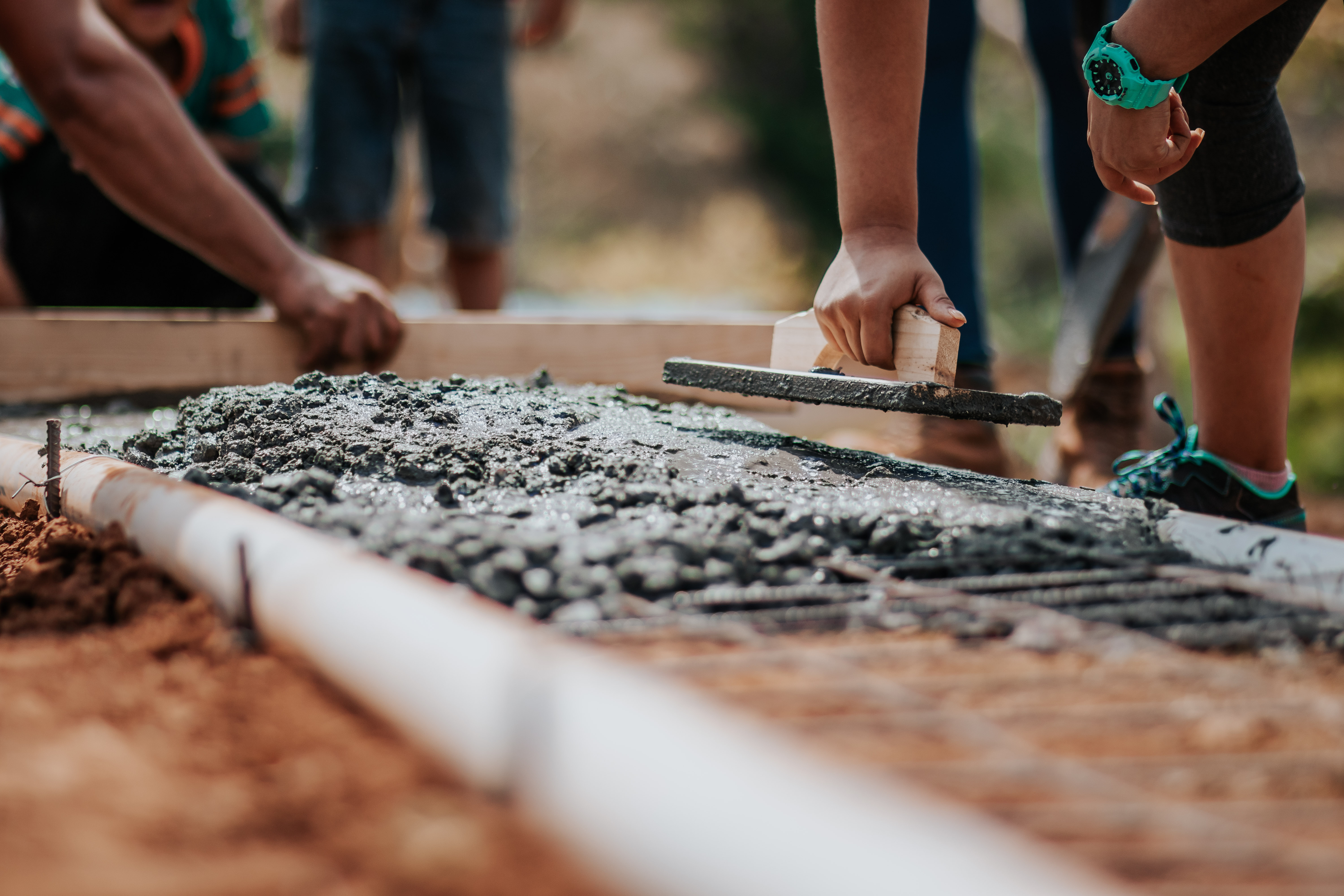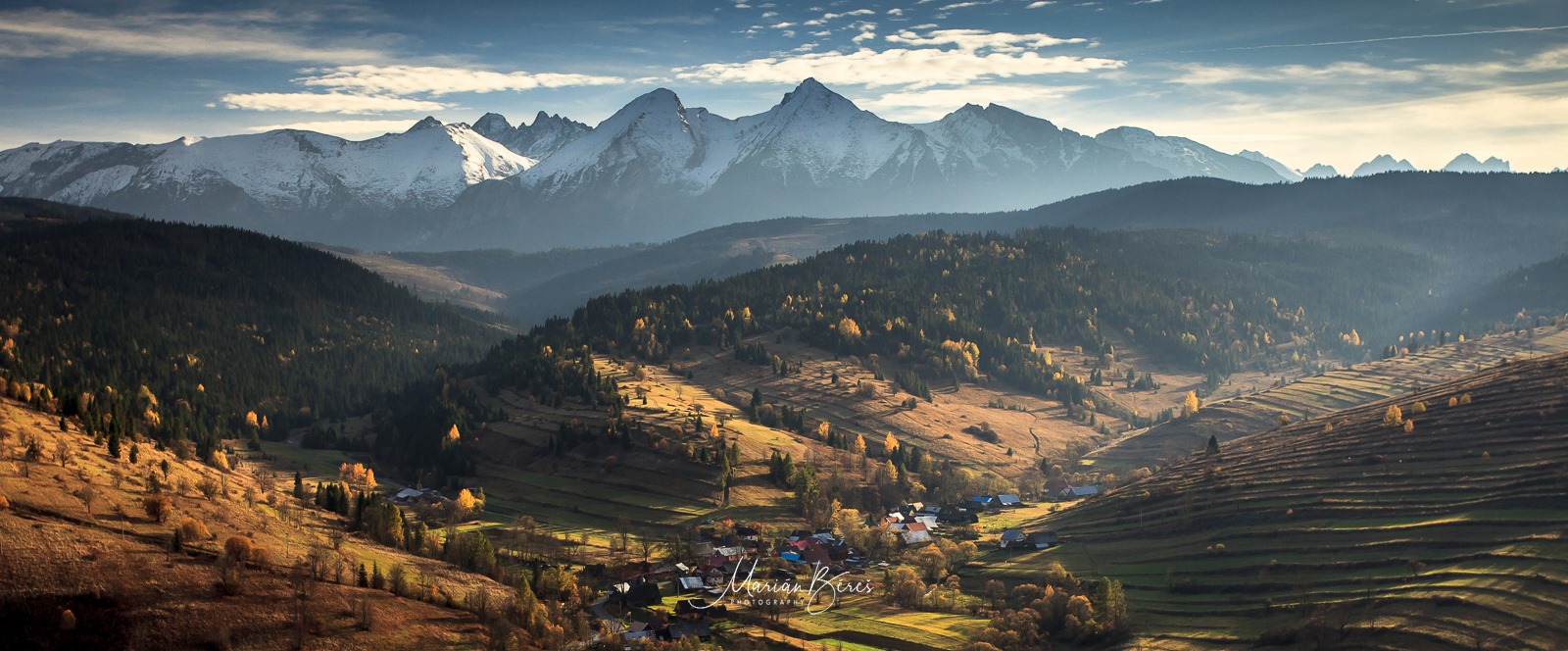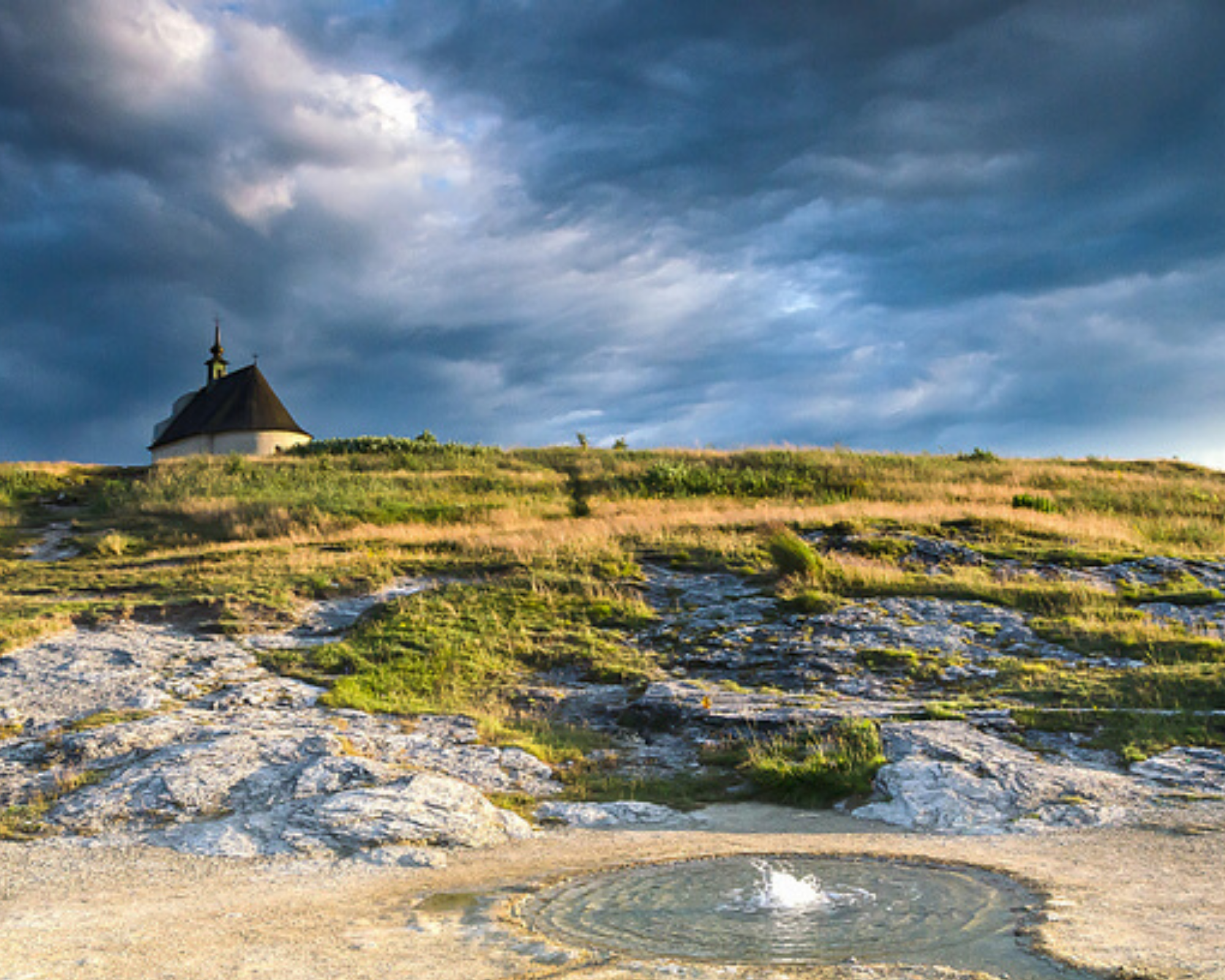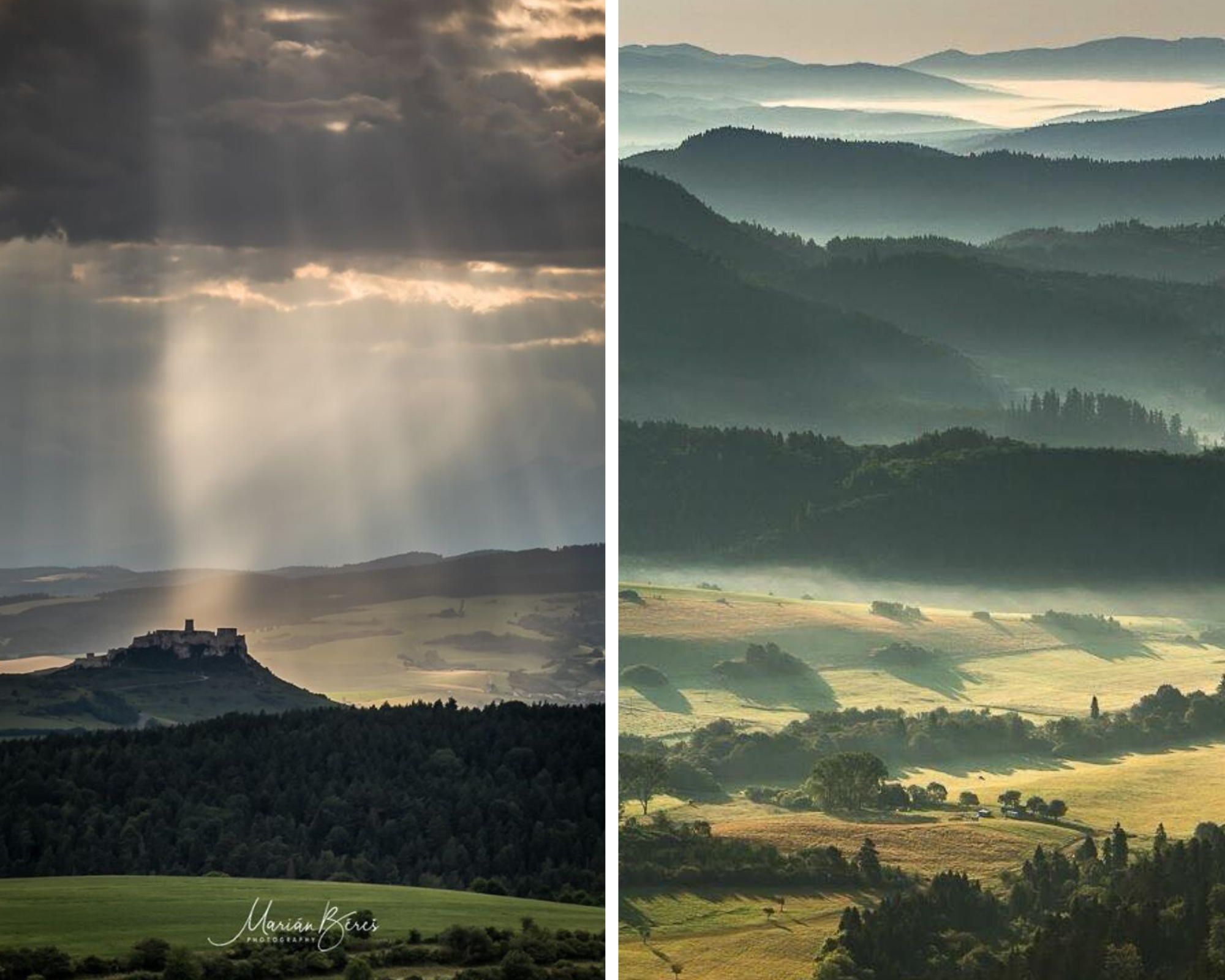

Photo credit: Teach for Slovakia
19.5.2020
15 minutes of inspiring reading
- What exactly do you do and how long?
I work in what is technically called “inclusion of marginalized Roma communities”. Today it has been about 10 years. On a non-governmental level, I am currently focusing more on housing and employability in the Spiš region, but I feel that it is still primarily about one thing – education in the broadest sense of the word. In years 2014-2016, I worked as an English and maths teacher at the secondary level of the primary school in Nálepkovo, where I taught mostly children from marginalized Roma communities.

Photo credit: Igora André´s private archive
Initially, I did not consider becoming a teacher in the classical sense of the word – that I would study at the Faculty of Education and then, in accordance with the legal definition, become a pedagogical employee. But since my university studies (I studied political science) I was close to what I would call a “motivator “. During university, as a volunteer in the Good sports association, I used to train boys from the Petržalka housing estate in indoor football. After training, while drinking Kofola (note: Kofola is a traditional and locally very popular Czechoslovak soft drink), we talked a lot about everyday topics in life. I enjoyed watching young people grow. When mutual trust between the “coach” and the “player” creates a relationship that can shift thinking on both sides. Education also happens in housing and employability assistance.
- What exactly and who do you educate in the area of housing and employability assistance?
It is a non-profit organization KEPLA (Kežmarok Platform for Social Inclusion). It operates mainly in the Kežmarok district, but also in the Spiš region as a whole. It was founded in 2016 to primarily focus on the integration of excluded Roma communities in individual municipalities of the district. It focuses its mission on 2 main pillars – housing and employment. In the area of housing, it is assistance in self-help construction (training on financial literacy and construction planning), in the area of employment it is assistance in setting up municipal social enterprises and psychosocial counselling (mentoring) for people disadvantaged in the labour market. Until now, their activities have been focused on two municipalities – Krížová Ves and Ihľany. In the village of Krížová Ves, KEPLA cooperated with the municipal governance to establish a municipal company and start its activities in the form of self-help construction of houses intended for the transition housing system. In the village of Ihľany, KEPLA provided complex assistance in the self-help construction of four family houses for private ownership. Further, it accompanied clients through the process of finding employment in the open labour market (job counselling, creation of CVs and cover letters). KEPLA also does capacity building training for people in helping professions (field social work, community centre staff and health education assistants). In this field, in years 2018-2019, the organization prepared and implemented six full-day trainings for employees in community and social work planning, as well as in leadership based on the concept of the mature, and therefore serving leader (serving leadership).

Photo credit: Igora André´s private archive
- What made you, as a political scientist from Bratislava, move to eastern Slovakia and get involved in Romani issues directly in the field?
Every story starts in the family. I grew up in a place where social work was a lifestyle. My father was a doctor with a strong affinity to working with seniors, but he was a philanthropist in the broadest sense of the word – he liked people and especially those who in some ways were “wounded” and whom he could help. Even before 1989, he had a dream to establish something with other like-minded people, a work based on Christian principles, which they called “Betania” from the Hebrew “House for the needy.” He was inspired by a German model from the city of Solingen, which he visited right after the revolution. Following that, in the 1990s, allowing with other people he founded 2 activation facilities for the elderly (one is in Bratislava, the other in Kalinov near Lučenec) and sheltered housing for the mentally handicapped (Senec). Of course, this passion of his was passed on to us, his three children. He was not explicitly involved in the Roma topic, but I realize in retrospect that I learned one extremely important soft skill for this work – being able to communicate with people from a much lower educational background and the ability to convey a sense of genuine interest and equivalence.
“Where does so much hatred come from if, for centuries, we have been taught that we should love our neighbour as ourselves?”
My path to the Roma was by no means straightforward. Since our family owns a cottage in Liptov, as a 14-year-old I visited a settlement in the village of Pribylina for the first time. I can’t say that it didn’t affect me, but I didn’t feel any desire to explore this world at the time. I just didn’t understand why someone lives like this. The imaginary turning point came in 2009, when I had just recently finished my studies at university and my friend, and I had traversed the Slovak Paradise (National Park). We spent one night in the village of Dedinky-Mlynky near Palcmanská Maša. As we descended from the mountains, we met a small Roma boy who helped us set up a tent. As a reward, we invited him for a kofola in a local pub. That’s when I witnessed the hostility towards the Roma, having faced the prickly gaze of local regulars at the fact that a small “gypsy” came to the tavern with two strangers. Later that day in the evening by the lake I involuntarily overheard a hateful conversation between three girls about the situation with the Roma in the region, I think at that time it was related to Dobšiná. The circle closed and at the same time raised a number of questions in me. Just before going into the tent I observed for a while the silhouette of a charming place where the dominant feature (as in thousands of other villages) is the church tower. Where does so much hatred come from if, for centuries, we have been taught that we should love our neighbour as ourselves?

Photo credit: Igora André´s private archive
The definition of a “neighbour” was framed by a Jewish rabbi Yeshua of Nazareth somewhere in the east coast of the Mediterranean 2,000 years ago, who is still considered God’s incarnation by a significant part of humanity. Based on his question, he gave it to the Pharisee through the parable of the Good Samaritan. He set the bar “damn” high for us, and we still can’t come to terms with it to this day. With this puzzle, my interest in the so-called “Roma issues” in our Slovak context began. For a while I worked in other positions, so that at the beginning of 2011 I finally got an offer to work for the Office of the Plenipotentiary for the Roma Community, specifically in education. Gradually, this topic engulfed me, but I felt that I wasn’t in the right place – being far from the reality in the field. Instead my place was right in its heart. I was drawn to Spiš also because there is beautiful nature and a unique cultural heritage. In this sense, Teach for Slovakia was a gift from heavens for me. Nálepkovo was the perfect place for a 2-year work placement in the front line. (Igor’s experiences from teaching at the time, as well as observations on current events in the Roma issue, can be read on his blog).
- What obstacles do you encounter most often?
It is a life that few people from the middle-class understand at first glance. Everything boils in us when we see children running barefoot and half-naked in winter, when we see kids wandering around bars with slot machines and alcohol at night, when they don’t carry a school bag and equipment to school and they cannot be expected to do homework. In particular, teachers, who typically represent the middle class, are all outraged when they see the parents’ careless approach to their children’s education. And when they can very rarely expect the parents to come by at the school to discuss their children’s progress. Life in a Roma settlement is thus, in the spirit of the theory of generational poverty, marked by what is called the “present” way of life. In such a world, meeting immediate needs, regardless of the consequences, plays an essential role. Education is far beyond the horizon of basic living needs. In an environment of generational poverty, priority is given to entertainment and relationships with the closest people, not to whether each member of the household has their own bed, a better heating stove or better windows with less heat loss. Therefore, in this way of life, they often miss loan repayments for consumer goods bought primarily for entertainment. And so, they very easily find themselves in debt and execution spirals, which make it impossible for them to get a job, which significantly hinders their path for integration in the middle class.

Illustrative photo: Canva
Not to be misunderstood, I do not want to downplay or justify this way of life in any way with the narrative of the theory of generational poverty. Living in a settlement brings with it several addictions and pathological phenomena, which people in various helping professions are working on mitigating. Aggression and various forms of violence often stem from people being crammed into an extremely small space paired with a deficit of basic physiological needs such as sleep, and satiety being met. I have not read any scientific study on the effect of constant noise on an individual’s development, but I dare to point out that long-term exposure to high levels of noise and of course stress (which is proven in many studies) has a particularly negative effect on the individual and his family’s ability of getting out of the environment of generational poverty.
“Ultimately, the heart of the problem is the problem of the heart.”
Life in the settlement creates a huge barrier between the world of the middle-class and the world of the poor, who are also Roma. There is also a lot of prejudice against the majority by these poor people. A big problem is inferiority complex, which is manifested by being closed off, by a fear of getting a place in a company where the majority is “non-Roma”, and similarly in the school environment. The majority must give these people a much better chance, they need to be more generous in supporting their growth and their gradual entering of the middle class. Where it is understood that this is a win-win situation, where both parties win and the whole community as such advances.
- How does the situation change in the areas closest to you? Are you seeing any progress? Isn’t it like fighting the windmills?
It is certainly not like fighting the windmills. I see progress when people don’t ask for money for food at the end of the month. Undoubtedly, the greatest progress happens when you see a shift in thinking from “living in the present moment” to “concerns about tomorrow”. When you see concerns in the parents’ faces about their children’s performance in school, what will happen to them after the disruption of the educational process during the corona crisis and how they will succeed later in life. These are significant shifts. For me, the most important thing is not whether someone gets the building approved, but how she or he grows in the process from the initial act of saving, through the vision of the house, to handling administrative matters and communication with the authorities. How she or he recognizes the value of money, time, work, and close relationships.

Illustrative photo: Canva
The greatest joy I have when I see that people are willing to help each other, even without getting any material or financial reward, when they want to share their talents for the benefit of the wider community, in this case the whole village.
- Do you have any positive examples in Slovakia where this has worked? What was the combination of factors that made it possible?
I don’t really want to mention here well-known examples of the relatively successful integration of the Roma into society :). But, if I were to highlight the key success factors, it is a will on the part of the municipality governance (mayor and MPs), expertly prepared comprehensive strategy with concrete action plans for inclusion of marginalized Roma communities and tireless communication with the Roma and non-Roma communities. It is a partnership principle and the promotion of a discourse within the community that everyone is a “stakeholder” in this endeavour. At the end of the day, it will help everyone. In the implementation phase, three C’s are key: coordination, communication and cooperation on all possible levels – municipal, regional and national. I do not want to mention specific areas at this point, it is clear to everyone that these are the visible aspects – housing, education, employability, and health. However, from my point of view, something invisible remains they key. I would call it a miracle of inclusion; it is a kind of spirit that changes the hearts of both the affected Roma and the non-Roma. Because, as my very good American friend says, “ultimately, the heart of the problem is the problem of the heart“.

Illustrative photo: Canva
7. What are your favourite places on Spiš that no footourist should miss?
The longer I live and work in Spiš, the more I like it. It is like timeless literature or music, you can read or listen to them countless times and you will always discover something new, some new element, or new information that you haven’t noticed before. I just never get tired of walking through the square of Master Paul (in Slovak: Námestie Majstra Pavla) in Levoča, or around the perimeter of the city walls. Aesthetic experience, new discoveries and psychological “hygiene” are guaranteed.
“In Levočské hills, a road trip from Levoča towards Uloža and further to Brutovce is a huge experience for me, where, so to speak, you drown in the views of extensive fields of meadows and pastures, which take on a deep green colour in these months.“
It is fascinating about Spiš that the German footprint stretches from the Polish border in the north to somewhere in the village of Smolník in the south relatively close to Hungarian border. In Hniezdno (Stará Ľubovňa district) I see the same picturesque houses as in Medzev (Košice-okolie district).

Photo credit: Marián Béreš Photography
For me, the genius loci is created by a combination of natural scenery and cultural monuments – such place is definitely the surroundings of “Sivá brada” under Spiš Castle with the travertine hill Dreveník. These places have a really electrifying atmosphere for me, where I literally recharge. I felt great in the already mentioned Smolník on the lower Spiš. A chapter of its own is the whole Hnilecká valley, from where river Hnilec springs under Kráľová hoľa all the way to its confluence with Hornád in the Ružín waterworks. Nálepkovo is too in Hnilecká valley, set in the wild (albeit marked by deforestation) nature of the Volovské mountains. From nature, my favourite are the various peaks and nooks of the little-discovered Volovské vrchy – from Kojšovská hola in the east to Babiná nad Dobšinou in the west. I feel exceptionally (and therefore I keep going back there) on Vysoký vrch above the village of Poráč. It is part of the Galmus gorges – a limestone-dolomitic plate that stretches as far as Krompachy; the scenery towards the High Tatras and the entire Hornád basin is amazing.

Photo credit: Michal Bobko
I am also fascinated by the three defining rivers Spiš – Hnilec in the lower, Hornád in the middle and Poprad in the upper Spiš. Above all, Hornád “dividing” the Slovak Paradise makes hikes here so charming. At the same time, rafting around here is amazing too. For cycling enthusiasts, a great experience is crossing the Slovak Paradise through the Kopanec saddle from Hrabušíc to the Stratenský canyon. The whole time you ride on a relatively well-maintained asphalt road with fabulous views, but also steep elevations. It is hard work but comes with a well-deserved reward. Honestly, the Slovak Paradise is overcrowded in the high season, so I prefer the less explored corners, such as the Volovské or Levočské hills. In Levočské hills, a road trip from Levoča towards Uloža and further to Brutovce is a huge experience for me, where, so to speak, you drown in the views of extensive fields of meadows and pastures, which take on a deep green colour in these months.
The abandoned German evangelical churches on Upper Spiš are close to my heart also. (An excellent monograph about them was written by Mr. František Šťastný.) I think that Podolínec in the district of Stará Ľubovňa and Spišské Vlachy in the district of Spišská Nová Ves are undervalued towns with huge potential. In my opinion, Medzev is still waiting to be discovered, even though former President Schuster has made every effort to do so. In Medzev, those who love old wooden gates and their portals will enjoy themselves. I hope that with this conversation I can also promote these towns. 🙂

Photo credit: Marián Béreš Photography
- Do you consider yourself a “slniečkár”? How do you perceive the definition of a “slniečkár”?
Note: Slniečkár, is a label, usually used with a negative connotation, for people who hold open, progressive, pro-European views. (from “slnko”, in English sun).
I will try to formulate the answer through the already mentioned parable of the “Good Samaritan.”
If the belief that after personal efforts, limiting my own comfort, sacrificing my own finances, free time and energy, so to speak, participating in the suffering of another, I can finally help solve the problem of my neighbour so that he / she stands on his / her own feet and possibly can help others, then I am a slniečkár. This is the story of the Good Samaritan, who postponed his “work duties” to save a seriously injured person. He significantly reduced his own comfort and was willing to pay all the costs of health and social care. We can call it an elusive standard of the slniečkár. At the end of the story, however, we do not learn how the attitude of the Good Samaritan affected the recipient of help himself / herself.
In social work, such as working with a marginalized Roma community, noticeable results and changes appear only after a very long time. For a long time, the social worker only sows, but sees no harvest. Anthropological realism should be part of this process – the perception of one’s own reality’s disruption as well as that of the receiver. I have the impression that this commonly perceived label omits this dimension, emphasizing too much that the destitute or marginalized person is a victim of a ‘system’ or ‘structural factors’. And so, idealization occurs, which harms the receiver and ultimately the whole society. I am convinced that the real threat of penalty, the so-called repression or restriction is an integral part of an individual’s progress from the abyss of dependence to his or her own independence and later, value within society. Not for the penalty itself, but for the lessons that come with it. Of course, potential penalties must be well communicated by the relevant authority and later well reflected upon by the recipients themselves.
So, answer for yourself whether I’m a slniečkár or not. 🙂
- How has COVID changed your situation and the situation of the people you work with?
As for housing construction, very little as this is progressing slowly depending on who has what options, resources. Otherwise I am in contact with people more by phone. Our efforts in the area of job counseling have been affected most, as we stopped our activities there completely.
You have read interview with Igor André.
This article has been published as a part of a series called Humans of Footour. Our wanders through life and world have brought us many stories and new, unique perspectives on the world and people around us. For now, we no longer wander, instead we are staying at home and build our capacity. We are working hard, so that we all can travel more responsibly and only leave a positive footprint behind.
We can’t wait for our joint adventures – once it will be safe again, until then we would like to share with you stories from Slovakia and around the world. Stories of people, who are close to our heart and our philosophy. People, who are Footourists by nature – who care and look to understand their impact, who help and make this world a better place, and inspire others to do the same. For more info about our future travel adventures click here!
You can support Necestou(ka) Footour with 2 or 3% of your income tax. More information here.
